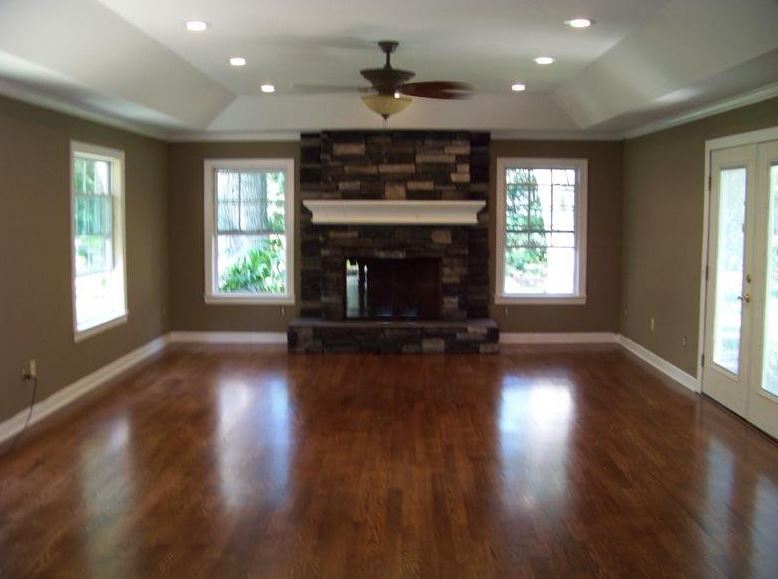 When you first purchased your home, you probably thought that it had plenty of square footage. But as time goes on, you might start to feel that it’s time to build an addition to your home, especially if you have a growing family.
When you first purchased your home, you probably thought that it had plenty of square footage. But as time goes on, you might start to feel that it’s time to build an addition to your home, especially if you have a growing family.
Need Another Nursery?
If you have young kids or more on the way, you might find yourself needing a few more bedrooms. If you’re in this predicament, HGTV says there are three options for adding more square footage to your home: match a new section or home to your existing home; build up and add a new floor or expand out into existing yard areas; or add a bump out addition that hangs off the side of the home.
Matching the new to the old basically tacks on another section of your home to your original layout. This can be tricky when it comes to a smooth floor plan, but it can be done with careful attention to design. If you have a two-story home, make sure you think about the flow both upstairs and downstairs, as building out can give you a chance to add space on both floors or be an opportunity to build an attached garage with living space connected above on the second floor. You want to strive to make the addition look natural – like it’s always been there.
Building up or out is a second way to add living space to your home. When going out, you’ll trade yard space for new living space, which can prove tricky in some cases. If you have a small lot or limited options for where an addition can fit in, this could require zoning variances or necessitate other work with local government. Building up requires no extra ground space, but presents unique issues of where to locate stairwells and how much extra home your foundation can support. Some areas also have building height restrictions, and so you may need to be mindful of that, as well.
Finally, adding a bump out to your home offers an in-between option for those with a second floor. This option can often save on costs, as you won’t need to make major changes to your roof or foundation in many cases, but you also have limited capabilities. You can expand living spaces, increase kitchen floor plans or add a bathroom, for example, but adding a spacious new bedroom or full living room won’t typically be possible with a bump out.
Choose which option is best for you, your home and your property, and discuss your design plans with an architect. Be realistic when it comes to your budget, but make sure you get what you really need. If you need another bedroom for one of your younger kids, but are considering having more children – or could use space for a home office – figure out a way to make the one additional bedroom in your plans into two.
Don’t forget, as well, that the scope of your addition project should also be forward thinking and include extra support spaces like closets and bathrooms. If you’re adding two new bedrooms, for example, you may also want to add a new bathroom. Your babies may not need the bathroom space now, but in a few years you’ll have children and teenagers fighting over the bathroom in the morning or need extra space to store seasonal clothes or keepsakes. Plan the space you expect to need into the addition and be ready for the future.
 Are Your Parents Moving In?
Are Your Parents Moving In?
If you’re looking for some extra space for your parents or in-laws to move into your home, you’re not alone. The Washington Post says that the population of people age 65 and older is growing, and expected to reach 72.1 million by 2030. With many members of the Baby Boomer generation living longer and healthier than previous generations, there is an increased need for housing. Many elder adults may not need specialized care, but the three-story home where they have lived for the last 20 years could be more space than they need now or pose mobility concerns. That leads many families to inviting parents to live with their adult children as a convenient solution.
Consumer Reports reminds homeowners to keep the needs of their parents in mind as they build an addition to house an in-law suite. That means choosing universal design elements that can allow for aging in place to be an easy and simple transition. Elements of universal design include making doorways at least 36 inches wide to accommodate wheelchairs, if necessary; selecting a tub or shower that will be easy to get in and out of; and building everything in the in-law suite on one level to eliminate stairs that could lead to slips or falls.
 When planning an in-law suite, you can also make it fully self-enclosed so that it’s almost like having a second home or two-family unit. That means building a space that includes a full kitchen in addition to a bedroom space, living room and bath, creating something that’s almost like an individual apartment. This can also add future income to your home as a rentable unit or increase the resale value of your home. You may be eligible for tax deductions or breaks or even direct cash payments, says AARP, so be sure to look into any available incentives you might qualify for.
When planning an in-law suite, you can also make it fully self-enclosed so that it’s almost like having a second home or two-family unit. That means building a space that includes a full kitchen in addition to a bedroom space, living room and bath, creating something that’s almost like an individual apartment. This can also add future income to your home as a rentable unit or increase the resale value of your home. You may be eligible for tax deductions or breaks or even direct cash payments, says AARP, so be sure to look into any available incentives you might qualify for.
If you need to add an addition to your home, but you’re still not sure where to start, Reynolds Home Builders can help. We offer a number of home addition services, and can help you to add the extra space you need to your property. Our experienced builders have worked with all kinds of floor plans and additions, and can work with you to design a renovation or addition project to meet your needs. Call us today at 850-508-5076 to schedule a consultation and get started with expanding your home to fit your growing family.